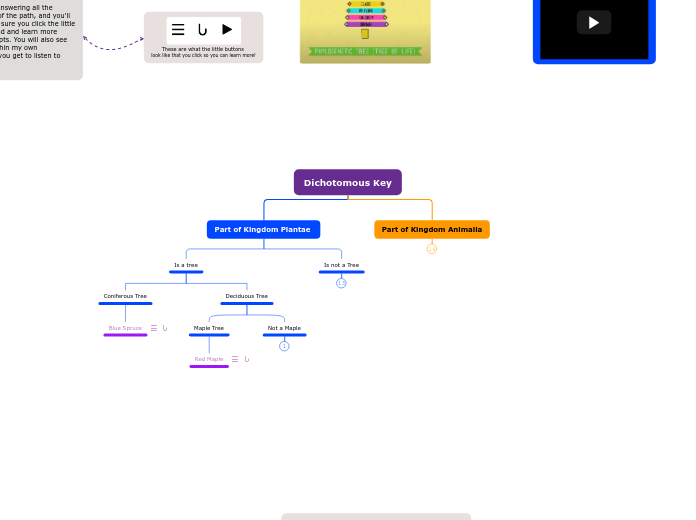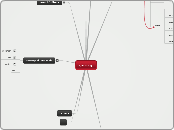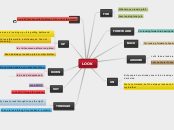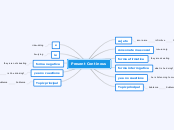Once you've finished using this super cool dichotomous key click on the link attached to this to enter part 2 and learn about the importance of biodiversity in your area!
Note: To put the dichotomous key back to 'normal' so you can find your next organism you have to click the little bubble with the negative symbol and close them one by one.
Watch this video tutorial for a demo of how to open up and close this interactive dichotomous key!
Certain words in this dichotomous key are long and can be hard to understand so I've made something special to help define and explain key concepts and words that I talk about in this that I may not have explained fully. The link to the fun slideshow is attached to this textbox!
These are what the little buttons
look like that you click so you can learn more!
Click on these bubbles to
open up the next question
How this Dichotomous Key Works: I challenge you to go on a walk in your neighbourhood in Ottawa and look at all the beautiful trees, flowers and little creatures you can find! When you find an interesting organisms, follow the questions in this dichotomous key and you might be able to match something you found outside with something in here!
Step 1: The key begins with an initial question. Is the organism you're looking at part of kingdom plantae (a plant) or kingdom animalia (an animal)? Depending on the answer, you will click the little circle bubble with numbers in it to discover the next question!
Step 2: Depending on your answer, click on either the bubble under kingdom plantae, or kindgom animalia. This will open up another question, which you should always be able to be answered by yes or no. For example, if I answer in my head 'yes' it is a tree, then you would click the bubble under the box saying 'Is a Tree'.
More Questions: Keep doing this process over and over. Answering 'yes' or 'no' in your head to the questions asked and follow the path.
Discovery: Eventually, after answering all the questions, you reach the end of the path, and you'll reach a specific species! Make sure you click the little icons beside the species to read and learn more about them and biology concepts. You will also see photos I took of the plants within my own environment, and sometimes you get to listen to what the animals sound like!
Before you begin your outdoor exploration with the help of this dichotomous key there’s one important thing to understand. The order of classification of all organisms (living beings) on earth. The photo below shows each section, with domain being the least specific and species being the most specific! If you ever need some help remembering the order, just think, “Dangerous King Philip Can Order Fantastically Great Soup”.
Dichotomous Key
Part of Kingdom Animalia
Has 2 Legs or Less
Can't fly and has no legs
Earthworm
Earthworm
Earthworms are like the underground heroes of the garden! These little creatures are like wiggly noodles that live in the soil. They have long, tube-shaped bodies that help them move through the dirt. Earthworms are usually brown or pinkish, and their skin feels slimy. They love to eat tiny bits of leaves and plants, and when they munch on them, they help make the soil healthy and full of nutrients. Earthworms also like to tunnel through the ground, which makes the soil softer and better for plants to grow. So, if you see a wiggly, slimy friend in your garden, it's probably an earthworm working hard to keep the soil happy and healthy!
You’ll see earthworms slithering around in the soil of your garden. A common earthworm is in phylum annelida, which is simply known as segmented worms. Segmented worms live in lakes and earthy environments. They have segmented bodies and a coelom (main body cavity). This ‘segmentation’ means that the worm is able to contract one part of its body inwards, so that it can propel itself forward much faster. This segmentation allows for it to be super flexible and move a ton of different directions when it’s in the soil. Their bodies are also bilaterally symmetrical. This means that if you were to cut the worm in half, the left side would look the exact same as the right side. Earthworms are a great example of a species part of phylum annelida, but if you ever want to learn more know there are a ton more worm like creatures in Phylum Nematoda and Phylum Platyhelminthes.
Can Fly
Feathers are tan and brown
Canada Goose
Canadian Goose
The Canada goose is like a big honking visitor in the sky! It's part of the Class Aves, Order Anseriformes, Family Anatidae, and its scientific name is Branta canadensis. These birds are pretty big and have a cool "V" shape when they fly in groups. They have brownish feathers with a white patch on their chin and a black head and neck. Canada geese make a honking sound that sounds like they're saying "honk, honk!" They like to eat plants near ponds and rivers, and they even like to swim there too. In the winter, some Canada geese fly south to find warmer weather, but they come back to Canada in the spring when it gets warmer.
Feathers are red
Cardinal
Northern Cardinal
The Northern cardinal is a colourful bird that brightens up our gardens! It's scientific name is Cardinalis cardinalis, they’re part of family Cardinalidae, class Aves and order Passeriformes. These birds are famous for their stunning red feathers, especially the males. They have pointy crests on their heads, like fancy crowns. Northern cardinals like to sing cheerful songs, and their chirping sounds like they're saying "cheer, cheer, cheer!" They eat seeds and insects and are often seen at bird feeders. These birds don't migrate, so you can spot them all year round.
To continue your learning experience, I’m going teach you about bacteria. Sometimes, birds can get sick and a common cause of that is a disease called Chlamydophilosis. This is a deadly intracellular bacterial species. It is hard to treat and different from a common bacteria because this disease lives inside the birds cells, which makes it hard to kill with common medecine. Different bacterias have different shapes, and scientists have named the different common shapes. This disease is a sphere-like shape, which is also known as cocci shape.
Chlamydophilosis is also a gram-negative disease. A gram test is used by scientists to organize different bacteria by looking at whether they have a special chemical called peptidoglycan in their cell walls. Since this disease is gram-negative, it means that it doesn't have the chemical called peptidoglycan in its cell wall. When these scientists apply this fancy test on this disease, it stains pink because it is gram-negative. If a disease is gram-positive, the fancy test will stain pink.
Has 4 Legs
Moves by bounding and is a rodent
Larger Mammal with no stripes
and gray fur
Eastern gray squirrel
Eastern Gray Squirrel
The Eastern gray squirrel is like a lively acrobat in the woods! It part of family Sciuridae, class mammalia, order rodentia and genus sciurus and its scientific name is Sciurus carolinensis. These squirrels have soft, gray fur with a fluffy tail that helps them balance and stay warm. They use their sharp claws for climbing trees and their big front teeth for munching on nuts. Eastern gray squirrels are super fast and can leap from tree to tree like they're playing a game of tag. They love to find and store nuts to eat during the winter when food is scarce. So, if you see a speedy, gray furry friend with a fluffy tail, it's probably an Eastern gray squirrel having a high-flying adventure in the trees!
Small Mammal with striped fur
Eastern Chipmunk
Eastern Chipmunk
The Eastern chipmunk is like a tiny, striped friend in the forest! It belongs to the Sciuridae family, and its scientific name is "Tamias striatus," but we just call it an Eastern chipmunk because it's easier. Chipmunks have soft fur with stripes on their backs, kind of like they're wearing a cool striped jacket. They have big, round eyes and cheeks that they stuff with tasty nuts and seeds to save for later in their burrows. Chipmunks are super quick and love to scurry around, looking for food and playing hide-and-seek in the leaves. If you see a little critter with stripes and a bushy tail, it might be an Eastern chipmunk!
The next key concept within biology you get to learn about is something called phylogeny. Phylogeny is similar to taxonomy, in the way that it’s a way to organise animals. Phylogeny organises animals depending on who their ancestors were and the way in which they evolutionized (changed over time). For example, about 70 million years ago chipmunks did not exist but mice existed. All those millions of years ago, a genetic variation in mice created chipmunks that you now see roaming in your backyard today. In a phylogenetic tree, chipmunks are part of the clade (group of species with common ancestors) sciuromorpha, which then breaks into five families, one of which being family Sciuridae, also known as the squirrel family. This is where chipmunks are classified since they are closely related to squirrels on a genetic level, and share many of the same physical traits.
Phylogenetic trees get very specific but they are super cool because they give us a ton of insight as to how animals evolutionized and became what they are today. Below I’ve included an image of what a phylogenetic tree can look like. Understand that the closer branches of the tree are together, the more genetically related the animals are!
Moves by Hopping
Eastern Cottontail Bunny
Eastern Cottontail Bunny
The Eastern cottontail bunny is a cute and fluffy friend that hops around in nature and is very common in Ottawa! It belongs to class mammalia, order Lagomorpha, family Leporidae and its scientific name is "Sylvilagus floridanus", but we usually just call it the Eastern cottontail because it's easier. This bunny has soft, brownish-gray fur and a white fluffy tail that looks like a tiny cotton ball, which is why it's called a "cottontail." It has big ears and loves to nibble on tasty plants like clover and grass. Eastern cottontails are super fast and hop with their strong hind legs. They like to hide in grassy places and are known for their adorable, twitchy noses.
To continue your learning journey learning about plants and animals, I want to ask you if you’ve ever wondered what plants and animals are made of? What are the building blocks that create the bunny that is so cute to look at? I’m here to tell you that every living being is built from cells, and plants and animals are specifically built from eukaryotic cells. Cells in general are super super super tiny, and you would never be able to see them with your own eye, but believe it or not, you’re made up of billions of cells! Eukaryotic cells contain something called a nucleus, which contains DNA which is the main building block for all life forms. All living beings that are multicellular (made up from more than one cell) are built with eukaryotic cells. This means that humans, tigers, horses, cows, dogs, spiders, birds, rats, dolphins and any animal you could ever think of are made up of eukaryotic cells!
Part of Kingdom Plantae
Is not a Tree
Isn't a Shrub
Petals do not resemble a sun
Bell-shaped flowers
Tulip
Tulips
Tulips are like nature's colourful balloons! They belong to the Liliaceae family, but we call them tulips because that's easier to say. These flowers come in lots of colors like red, yellow, pink, and even purple. They have pointy, long leaves, and the flowers look like cups with petals (bell-shaped) that can be all one color or a mix of colors. Tulips bloom in the spring and in Ottawa they can be a very big deal since we have the Tulip Festival which is filled with thousands of tulips.
Clover-like Pedals
Busy Lizzie
Busy Lizzie
The Busy Lizzie plant, which is scientifically called Impatiens walleriana, is like a rainbow in the plant world! It's a flowering plant that belongs to the Balsaminaceae family. In Ottawa, Canada, where it gets pretty chilly in the winter, Busy Lizzie’s brings bursts of vibrant colors to gardens during the warmer months. It can come in lots of fun colors like pink, red, and purple. Busy Lizzie’s isn't just pretty; but they’re also important for the local ecosystem. They provide nectar for helpful insects like bees and butterflies, making gardens in Ottawa a buzzing and fluttering place. So, when you see a Busy Lizzie, know that it's not just a beautiful plant; but a home and a diner for some of our favorite little critters!
Long petals resembling a sun
Orange Coneflower
Orange Coneflower
The Orange coneflower, or Rudbeckia fulgida, is a bright and cheerful plant that's easy to spot! It belongs to the daisy family, called Asteraceae, but it's a star on its own. The orange Coneflower is a sunny flower with a big, brown center and golden-orange petals that look like a fancy skirt. It's like a little sunshine on a stem! Orange coneflowers grow tall and strong, waving their petals in the breeze.
Is a Shrub
Has Purple Flowers
Common Lilac
The common lilac, or Syringa vulgaris, is part part of order lamiales and family Oleaceae. It's a deciduous shrub known for its fragrant and beautiful springtime flowers. Common lilacs typically grow to a height of 8 to 15 feet and produce clusters of small, tubular-shaped flowers in various shades of purple, pink, white, or lavender.
To teach you another cool thing about plants, I’m going to explain the super cool way that lilacs but also all other plants use to make their energy. They make their energy through something called photosynthesis! Photosynthesis is like a superhero power that plants have.
They use their green leaves to catch sunlight, just like we catch energy from the sun when we play outside. Then, they mix this sunlight with air and water to make their own food, a special sugary juice called glucose. Plants use this sugary juice for energy to grow and stay alive. And guess what? They also give us a gift in return - fresh oxygen for us to breathe. Pretty cool right? There is a formula for photosynthesis (CO2 +H2O → C6H12O6 +O2) that tells us that plants take in carbon dioxide and water and turn it into glucose and oxygen.
Has White Flowers
Panicle Hydrangea
Panicle Hydrangea
The hydrangea plant is one that is super pretty, and although it sort of looks like a tree, it is actually a deciduous shrub. Its scientific name is Hydrangea paniculata and is in genus hydrangea, species paniculata, and family Hydrangeaceae. Hydrangea shrubs can grow up to 25 ft tall. Through the summer their flowers are white, and they change and become pink and brown during the fall once they die.
One thing interesting about hydrangeas or all of the plants found within this dichotomous key, is that they’re vascular plants which are also known as tracheophytes in fancy words. Vascular plants are super cool because they have incredible transportation systems. To carry all their food and water around they have two sets of special tubes. One is called the xylem, which carries water and minerals from the roots of the plant, all the way up to the leaves. The phloem goes the opposite way, its tubes carry sugars and food made by the leaves to the rest of the plant. Now you know how plants transport and circulate water and nutrients through their bodies!
Is a tree
Deciduous Tree
Not a Maple
Ginkgo Tree
Ginkgo Tree
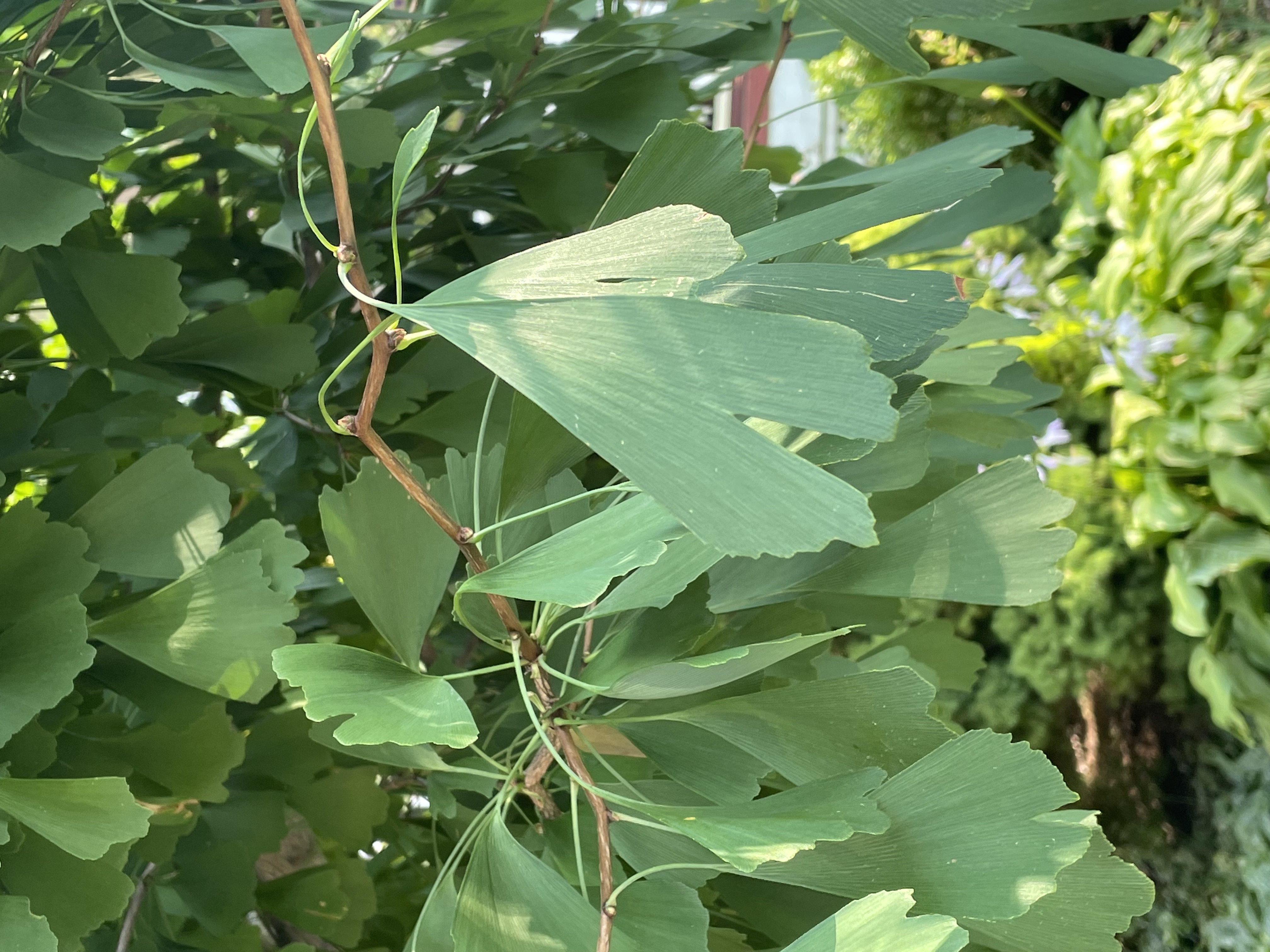
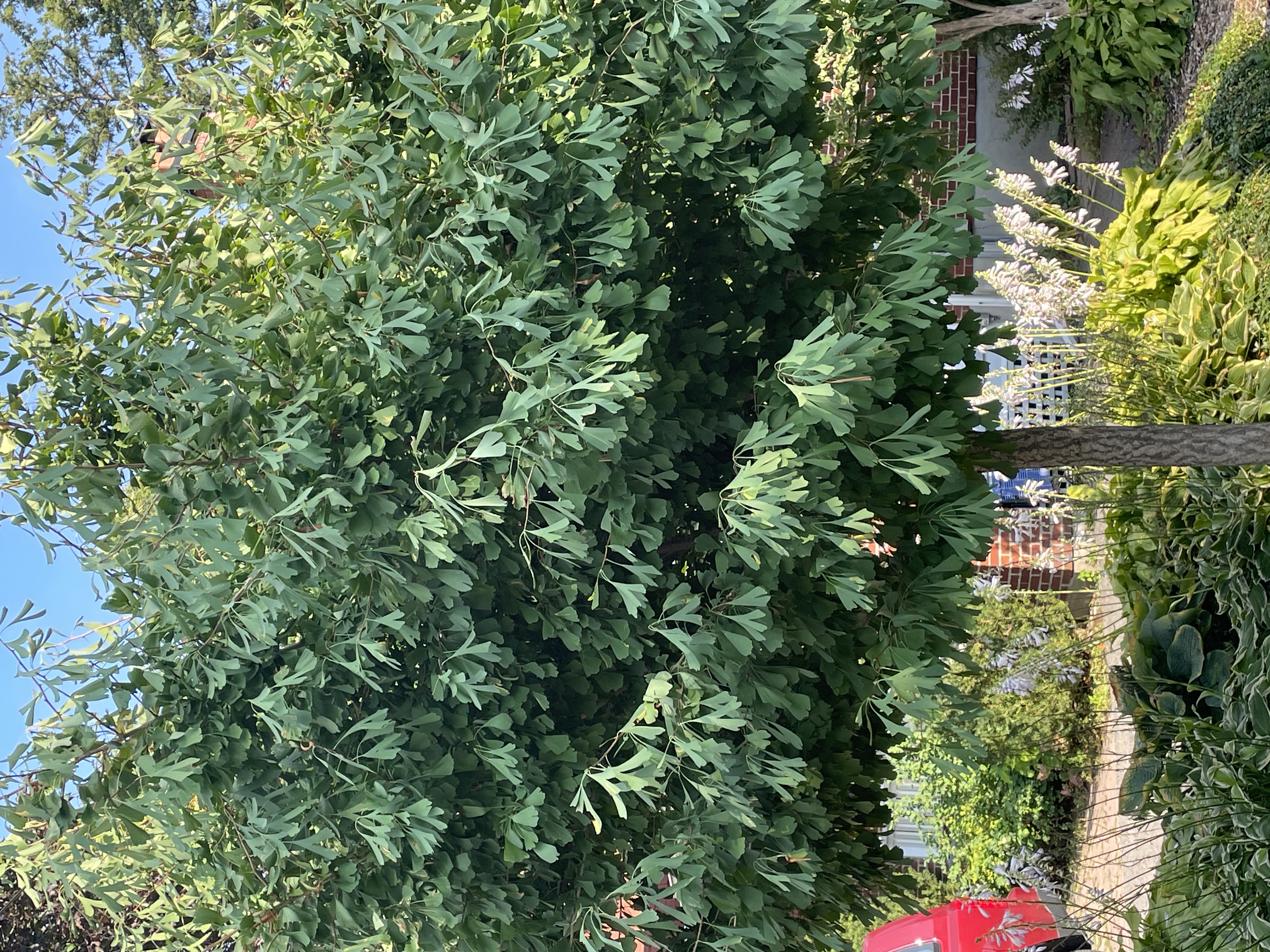
The Ginkgo tree is like a cool, ancient plant detective! It's called Ginkgo biloba in science and it’s in class Ginkgoopsida. What's really special about it is that it's the only member of its own plant family (Ginkgoaceae), so it's kind of a plant superstar. You can spot it by its leaves that look like little green fans or even like hands waving hello. In the fall, these leaves turn a bright and beautiful golden color. Ginkgo trees have been around for an incredibly long time, much longer than our grandparents or even our great-great-great-grandparents. So, they're like nature's own time travelers, helping us learn about the past while making our world look stunning in the present!
Maple Tree
Red Maple
Red Maple
The Red Maple, or the Acer rubrum in fancy terms is a very common tree in Ottawa and is also a very pretty one! Acer rubrum is in kingdom plantae, order sapindales, family sapendaceae and genus acer. This tree’s leaves is what our country's flag is based off of and it is a deciduous tree, meaning that it loses its leaves every winter, which is great because that means it becomes super pretty and multicoloured during the fall!
Have you ever thought about how the mighty maple tree is able to reproduce? I’ll tell you now, it’s pretty cool! Since the Red Maple is deciduous, this means it’s an angiosperm (have flowers and or fruit to enclose their seeds). Maple trees will begin to reproduce around 50 years old. For this to happen, when spring comes along, the Red Maple will begin to regrow its leaves after a long and cold winter. Then, it will start to grow little flowers along the tree, which bees and pollinators love. About halfway through the summer, the flowers will fall off the tree and it will grow a small fruit, which are V-shaped and are also known as helicopters in the kid world! These helicopters drop off the tree and fly to the ground. They’re special because encased in these helicopters are little seeds that germinate and then start to grow into trees!
Coniferous Tree
Blue Spruce
Blue Spruce
The Blue Spruce, also scientifically called Picea pungens, is a super cool tree that can grow to be ginormous like the one I found on my street in the photo above! Blue Spruces are native (belong to) to North America and have been growing in Canada and all around Ottawa for thousands of years! The blue spruce is a big coniferous tree, which means that they keep their needles all winter long. It can usually grow up to 15 meters tall or sometimes even taller. It has tons of branches shooting out of its trunk horizontally, and thick bunches of needles all along the branches…so be careful not to poke your fingers!
A cool thing about blue spruces, or coniferous trees in general, is that they use seeds to reproduce. Blue Spruces fall into the category of gymnosperms, which sounds like a super confusing word, but this simply means that they use cones to spread their seeds. For this to work, a blue spruce will start making male cones once it’s around 20 years old. Male cones make tons and tons of tiny grains of pollen through a system called meiosis. All these little particles of pollen get whooshed away in the wind and connect with a female cone on another tree. When this pollen makes contact with the female ovule, a connection called fertilization occurs. After fertilization a little seed starts to grow and shape what you know as a pine cone. When ready, the pinecones will release themselves and the seeds will fly down to the soil and hopefully start growing a brand new Blue Spruce!
